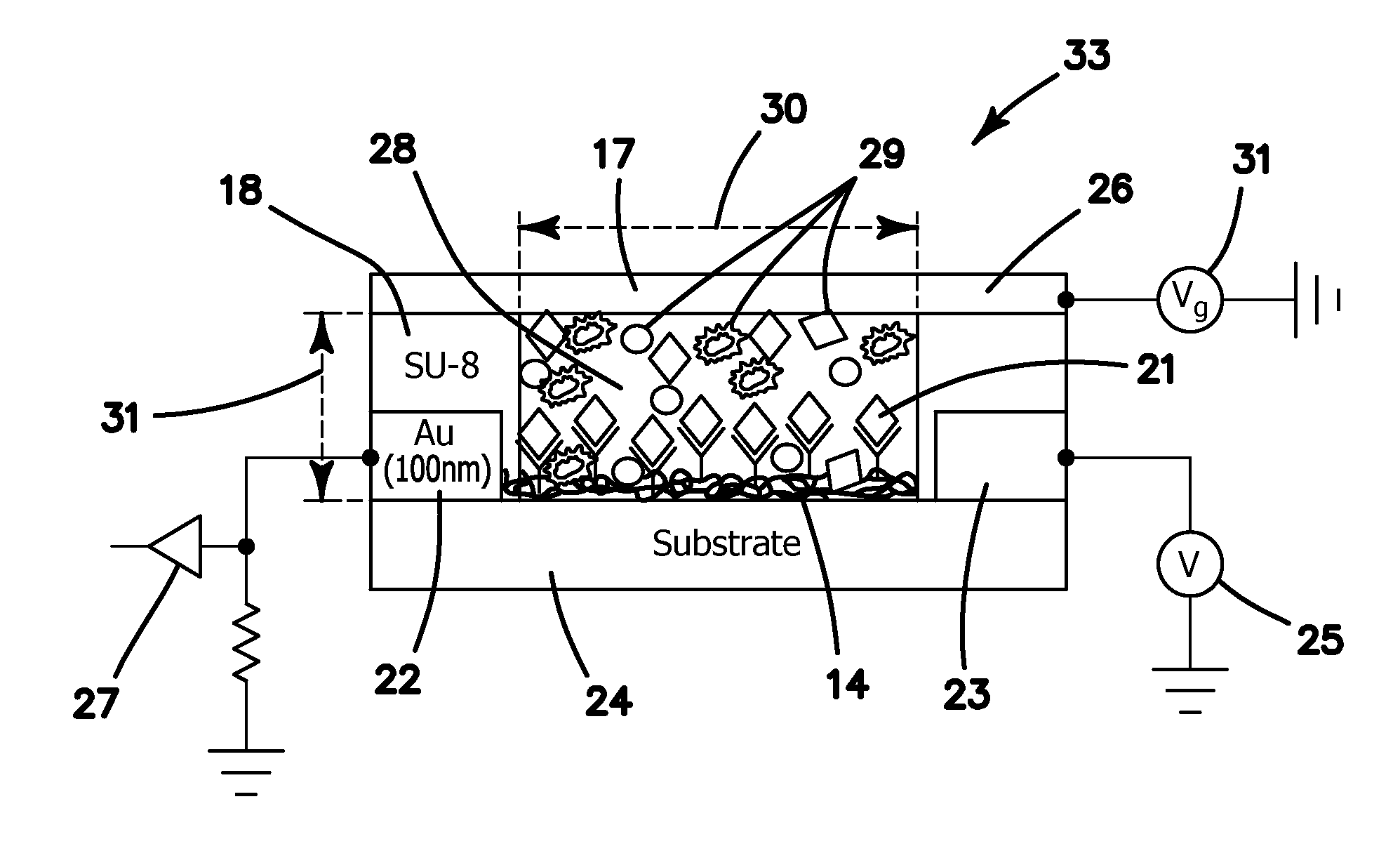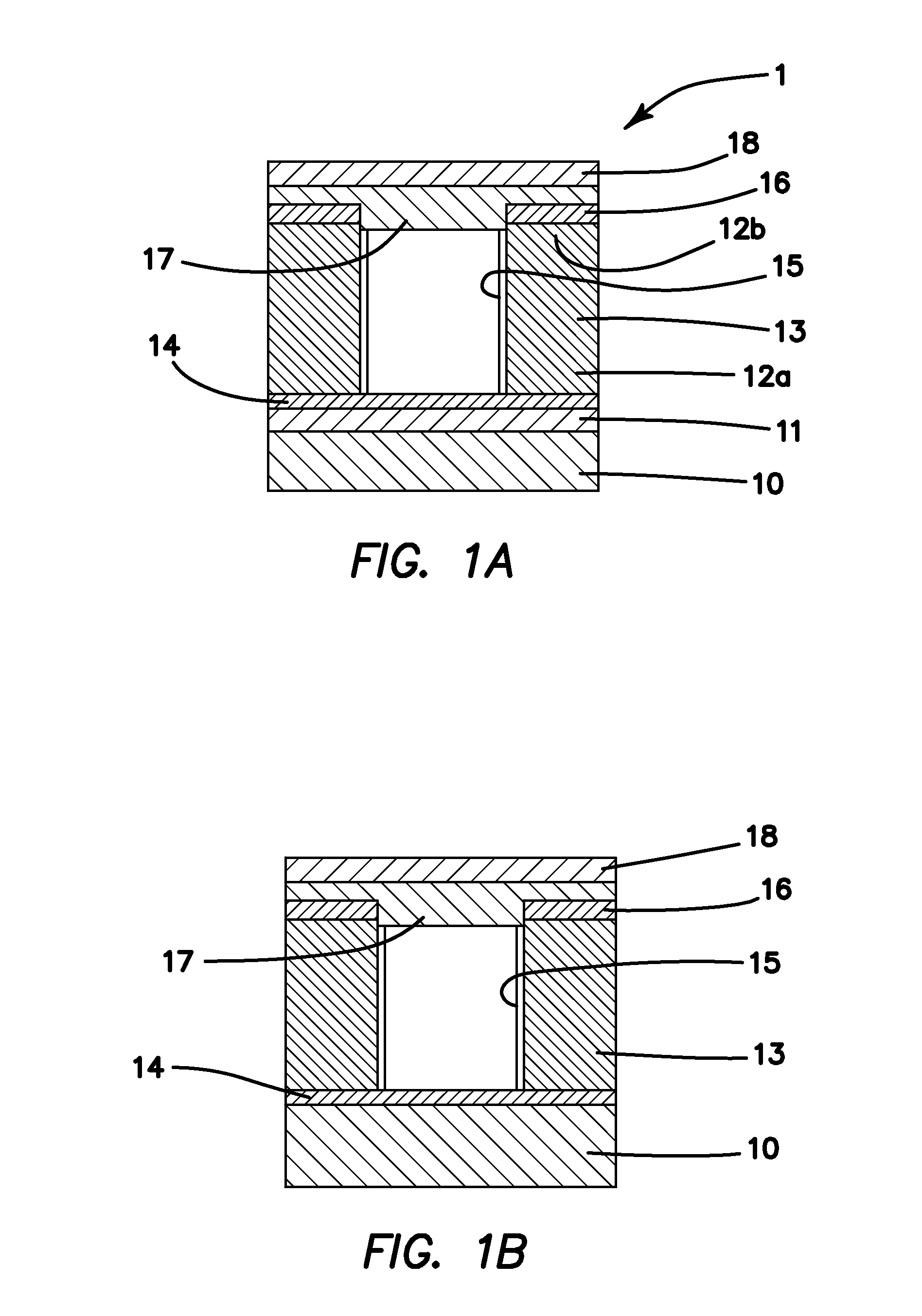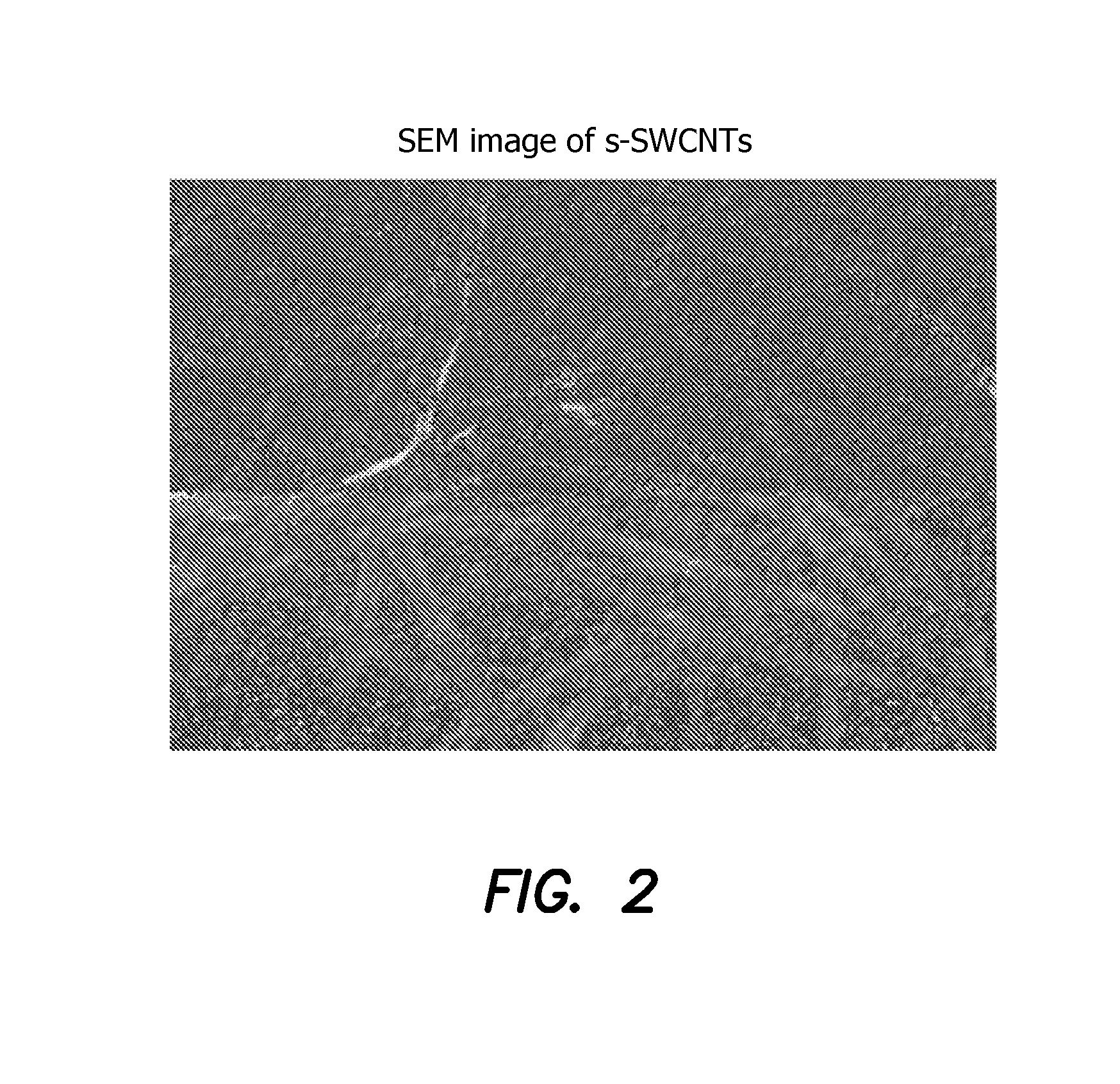Carbon nanotube biofet with a local amplifier in a system array for analysis of biomarkers and method of analysis of same
a carbon nanotube and biofet technology, applied in the field of field effect transistors, can solve the problems of conventional biosensors, inability of existing techniques to form an integrated apparatus that creates real time, and inability to distinguish between like molecules
- Summary
- Abstract
- Description
- Claims
- Application Information
AI Technical Summary
Benefits of technology
Problems solved by technology
Method used
Image
Examples
Embodiment Construction
[0112]The BioFET Cell
[0113]FIG. 1A is a diagrammatic cross sectional view of the bioFET cell 1 fabricated by conventional photolithography. A silicon (550 μm) wafer is used as a substrate 10. A nonconductive layer 11, such as SiO2, is disposed on substrate 10 and used to isolate the Si substrate 10 from semiconducting carbon nanotube channel 14. The metal electrodes forming the opposing sides of the cell 1 are each fabricated of three layers, namely a chromium (Cr) layer 12a with the thickness of 30 nm in contact with CNT layer 14, a gold layer 13 with the thickness of 200 nm disposed on layer 12a and a chromium 12b with the thickness of 30 nm disposed on gold layer 13. The fabrication is finalized by covering the interior exposed surfaces of the metal electrodes with nonconductive SiO2 layer 15 to avoid any electrochemical reaction between the metal electrodes and analyte that may occur during impedance measurement, since the electrodes serve only as electrical contacts and not dat...
PUM
| Property | Measurement | Unit |
|---|---|---|
| diameter | aaaaa | aaaaa |
| molecular weight | aaaaa | aaaaa |
| thickness | aaaaa | aaaaa |
Abstract
Description
Claims
Application Information
 Login to View More
Login to View More - R&D
- Intellectual Property
- Life Sciences
- Materials
- Tech Scout
- Unparalleled Data Quality
- Higher Quality Content
- 60% Fewer Hallucinations
Browse by: Latest US Patents, China's latest patents, Technical Efficacy Thesaurus, Application Domain, Technology Topic, Popular Technical Reports.
© 2025 PatSnap. All rights reserved.Legal|Privacy policy|Modern Slavery Act Transparency Statement|Sitemap|About US| Contact US: help@patsnap.com



